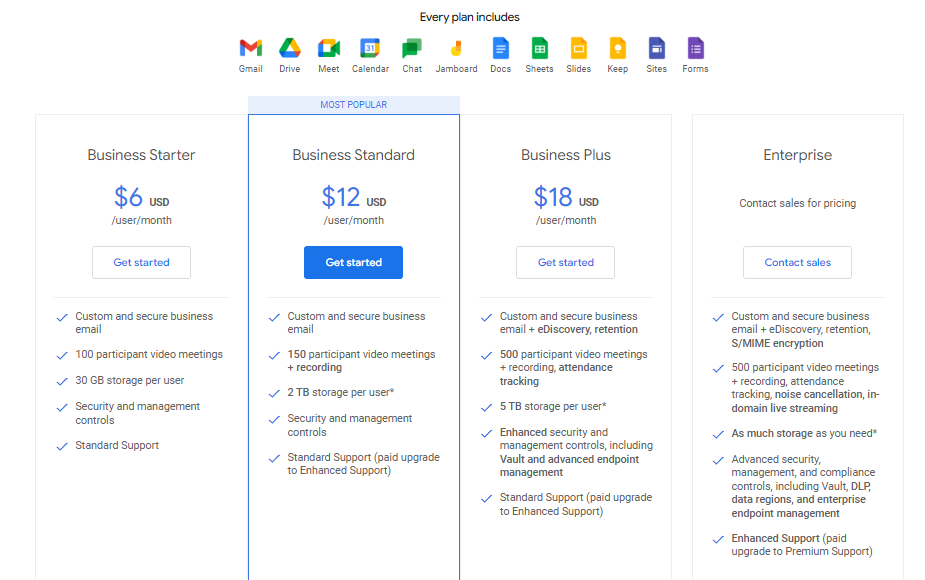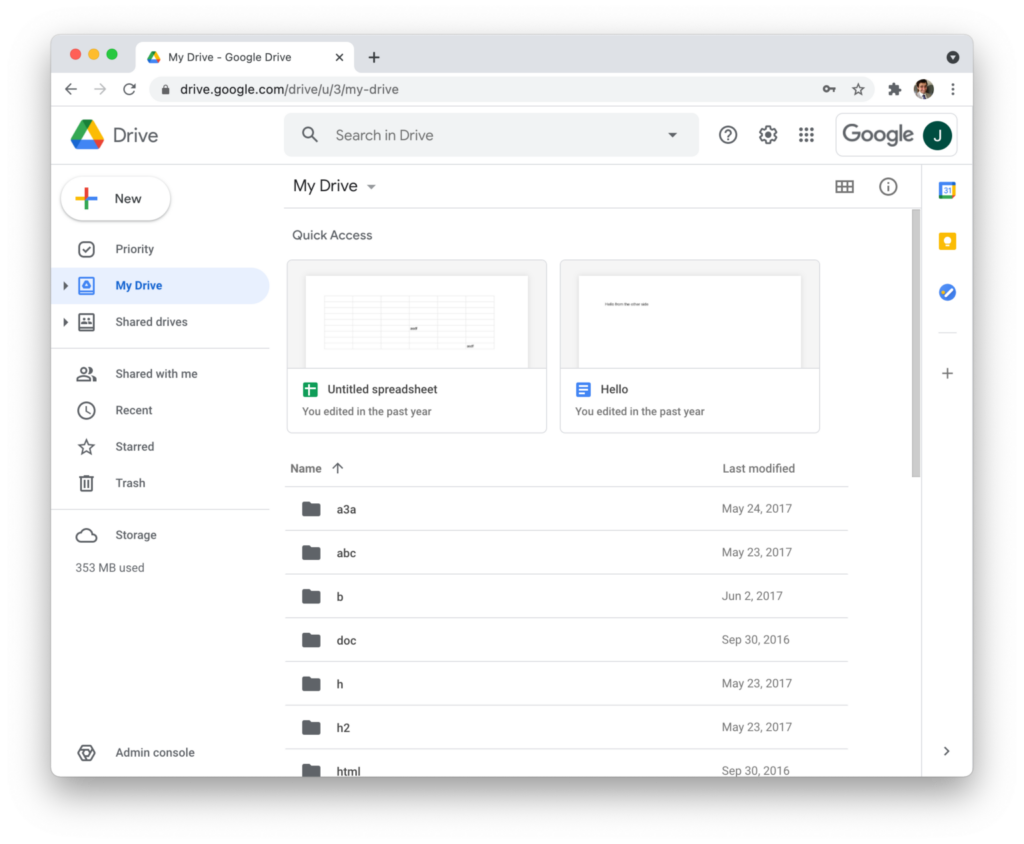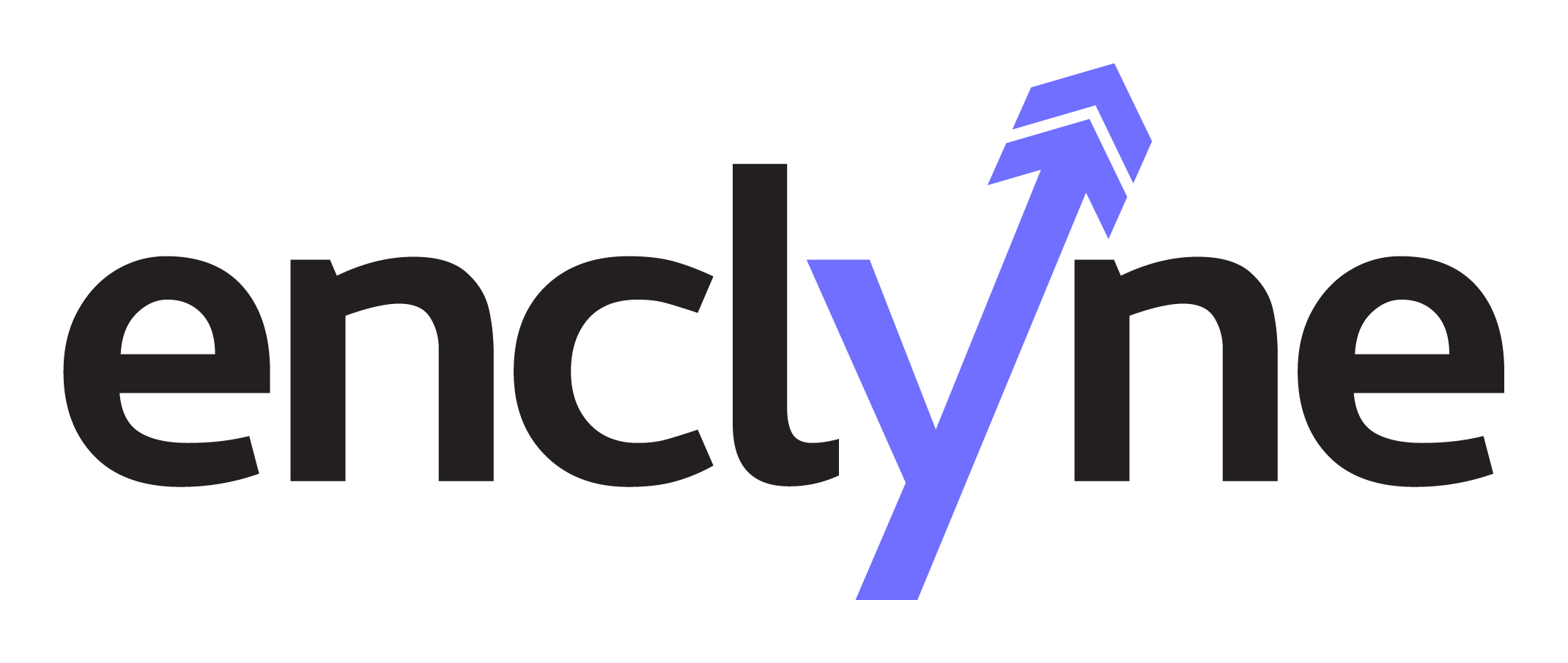The number of companies migrating from Google Workspace to Microsoft Office 365 is not published but the trend is strong. In this blog, we will discuss the reasons we have seen a number of companies make the transition. In a follow-up Blog, we will address the critical success factors in making a smooth transition to Microsoft Office 365.
According the Gartner, the current market share for productivity software Microsoft has 89.2% and Google has 10.3%. Interestingly, the Gartner article’s title is “Google Workspace Continues to Slowly Take Market Share From Microsoft Office and Office 365”. There is more to this story than the statistics may show.
First, a little background. Google released the first versions of Apps in 2006, then renamed it G Suite in 2016 and Workspace in 2020. About 10 years ago, universities and public school systems embraced the low cost and ease of deployment of Google. Those early wins translated into small companies and start-ups embracing Google for mail, document storage and apps like Word and Excel which Google calls Docs, Sheets, Slides and Drive. Fortune 1000 companies were rare wins for Google and many have since retreated back to Microsoft.
So why are companies migrating from Google Workspace to Microsoft Office 365? Here are the 3 reasons reported by our customers:
1. COST
Who would expect that Google Workspace which was always lower priced than Microsoft Office would lose on cost? Recently, both Google and Microsoft have made a roughly 20 percent increase in the monthly subscription cost. It is notable that Google customers did not believe the cost increases were justified with increases in features/capabilities. So, both companies raised prices but the acceptance has appeared to favor Microsoft.

Example: Using Microsoft Office 365 E3 which is a bellwether suite. The cost increase this year is 15%, from $20.00 per user to $23.00. That is the first increase since E3 was released in 2011. Since its release E3 has added Teams, OneDrive, a ton of security enhancements, Yammer – I know who cares – and integration with Windows Active Directory and a slew of other features. This increase was justified and the market was unfazed by the announcement.
Word, Excel and PowerPoint Endure: There is more to the cost issue. Most companies continue to use Office for Word, Excel and PowerPoint. Even if they have Google Workspace for email. Which means these companies are paying a big premium to use Gmail. This is compounded by integration issues between Word and Docs and Excel and Sheets. The cost of maintaining two environments just doesn’t make sense.
More Licensing Options: Microsoft offers a myriad of services options. So many that it can be confusing but companies want to allocate cost with user needs which Microsoft supports. Google features 3 options plus and an Enterprise version in which you Contact Sales for more information.
2. SUPPORT
The larger the customer the more enterprise quality support is demanded. On Google’s and Microsoft’s behalf, the cloud based delivery services do not require as much support as on-premise servers and services. As most buyers agree, it is a better model for core infrastructure. But, when you need support you want professional triage to determine what has gone sideways. This is where Microsoft’s over 35 years providing enterprise quality support shines. Support is never as fast and as helpful as you need but the difference in approach is noticeable. Google has new premier support options which are designed to close the gap.
Growth and Maturity: As a company grows in numbers and geography then builds the internal Information Technology staff the requirement for support grows. This is why we see so many companies as they grow over 100 to 200 employees switch to Microsoft.
Partner Networks: Most companies with less than a thousand employees are partner supported with Microsoft and Google. Microsoft’s partner network is literally huge, mature, global and well-trained. The distribution model of Office 365 and Microsoft 365 for SMB companies is through partners. This means your first level support is with a highly motivated partner who wants to keep your business.
Google also leverages partners. There are fewer partners and the focus of many partners is advertising via Google search. There are no public numbers for the number of partners focusing on support of Google Workspace. Notably, Accenture has made substantial investments in certifying consultants for large corporate and public customers but this leaves middle market customers with limited options.
3. SECURITY AND COMPLIANCE
Both Microsoft and Google have outstanding records for cloud security, assuming that two-factor authentication is in place. Two-Factor or Multifactor authentication (MFA) is the most effective and low cost protection all companies must deploy. Now that MFA is on the table, how do the services differ:
Document Management: A key distinction between Microsoft SharePoint/OneDrive and Google Gdrive/Team Files is that Microsoft is offering a full document management solution. So, if your organization is concerned with security, document management and regulatory controls such as FINRA, there is only one choice. If you like ease of collaboration with internal and external parties and security is not your biggest concern then Google is a good choice. In most of the conversions we have seen from Google Workspace to Microsoft Office 365 document management has played a significant roll in the reason to convert.

Administrative Security Controls and Alerts: Microsoft has literally invested billions of dollars in securing Office 365. Where you see this play out is in the Administrative Controls in your tenant. The degree to which you can see user behavior and manage your tenant is incredible but does require a serious investment of time to learn all of your options.
Regulatory Requirements: Regulatory compliance is a absolute for organizations which must meet these requirements. FINRA, HIPAA, SOX, European data residency rules and a host of other regulatory requirements have been part of the Microsoft offerings for years. Microsoft’s Trust Center has details on how organizations can access the necessary support. Microsoft simplifies checking your regulatory box and removes the uncertainty or additional cost for compliance. Clearly a reason many companies are making the switch.
U.Va. moving students from Google workspace to Office 365: Google grew its share of the productivity software market to 10.3% in 2020, according to research from Gartner, taking about 2% from Microsoft. Microsoft is still the clear leader however, with 89.2%. Overall, the productivity software suite market grew 18.2% during 2020.
As of March 2020, there were 6 million paid customers, according to Google’s most recent publicly available stats.
Security and Compliance: Office 365 has the best tools for compliance than any other suite out there. Microsoft pays a lot of attention on security and compliance and stays updated on ever-evolving compliance standards of the industry. Office 365 has compliance certifications – ISO 27001, 27018, SSAE16, SOC1 Type II & SOC2 Type II, FISMA, HIPAA, GDPR, and EU Data Protection Directive.
Conclusion:
Our clients found that Google did not mature with their needs as they grow and expect more from online services. Whether it’s support, cost or compliance, users are demanding more. If you are on Google and want to evaluate your options we are available discuss migration options, costs and timing. Things to consider in your planning are:
Training: While many users will pick up Outlook quickly, we find SharePoint and Teams require additional training.
Migration Communication: The change from Google to Microsoft will change the way your staff does work. Thorough and consistent communication is a critical success factor.
Partner Selection: Migrations from Google have become more complicated as both services have added more features. Select a partner with extensive and recent experience.
